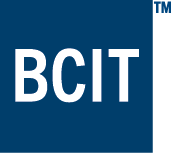Familial searching is a method often requested by investigators when they need to test a relationship between unidentified human remains (UHR) and family members of a missing person (MP). The technique is used to answer a question like “Is this deceased individual the son of Mr. Fred Smith?” From a statistical standpoint, these “indirect”, familial comparisons can be far more challenging than a “direct” comparison of, for example, a comparison of the UHR to a missing person’s personal effect, medical sample etc. Generally the statistical significance of the former can be far weaker, particularly if the UHR is highly degraded (i.e. giving partial profiles) and/or the MP relative is anything but a parent or child of the deceased. One way to overcome this however is to increase the number of DNA positions (loci) used in the comparison process. In this project, the student wanted to test the new (24-locus) GlobalFiler kit by Life Technologies to see how it handled analysis of degraded bone samples and what the impact of that would be on the familial comparison statistics.
DNA from twenty-one samples, analyzed previously with the older (16-loci) Identifiler Plus kit, were re-amplified using the GlobalFiler amplification kit. Four additional bone fragment samples were also added to this experiment. The results did in fact show an increase in the amount of useful DNA information recovered – both in the total percent of alleles recovered as well as total number of alleles recovered from each amplification. This increased success rate translated into stronger statistical support for identification when conducting a familial-type comparison (in this case a parent-child or sibling comparison). This becomes highly relevant as unknown profiles are compared to databases and advantageous matching of weaker profiles becomes more likely. The addition of Globalfiler to case workflows will have a direct impact on the success rate of UHR cases in the province.
More details of this student project, performed by Rita Gareb, can be found below.
 BCIT Forensic DNA Lab
BCIT Forensic DNA Lab